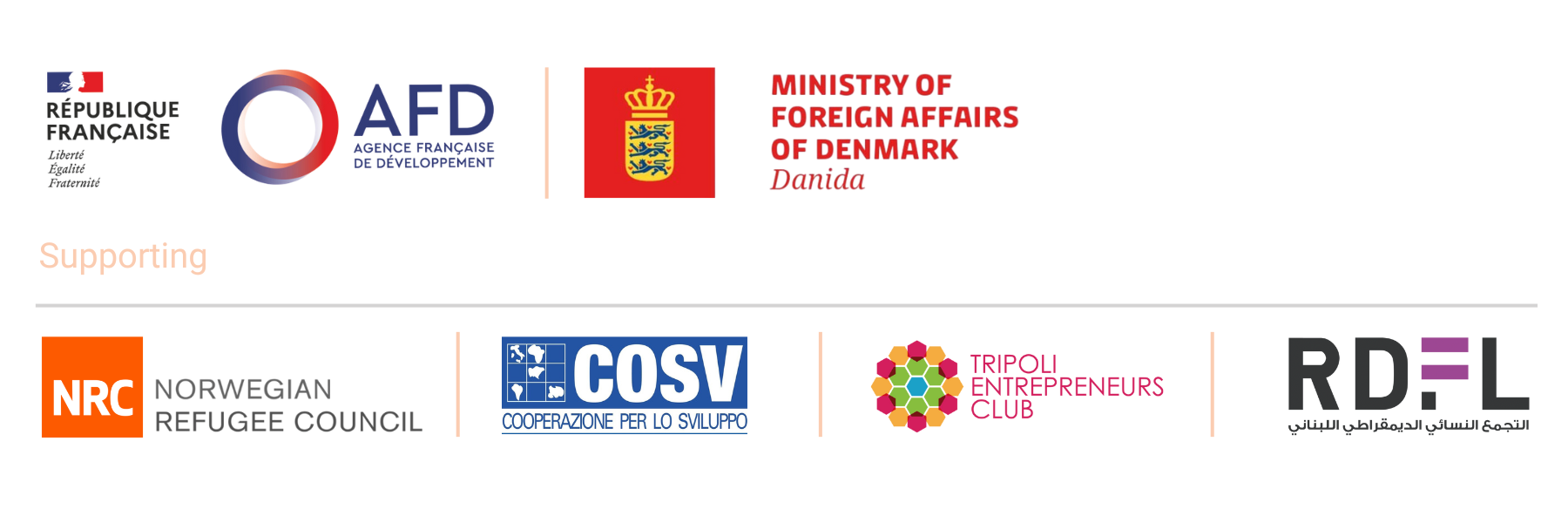
In Lebanon’s vulnerable urban neighborhoods, being employed doesn’t necessarily mean earning enough to live. While employment rates reveal who is working, a more important question is: how much are they earning—and in which sectors? This dual-layer analysis, based on data from Hayy Terab (Tripoli), Hayy Taamir (Saida), and Hayy Tamlis (Beirut), examines both the distribution of workers across income brackets by sector and the relative earning power of each sector using a four-curve income ranking.
1. Employment Exists—But Wages Are Often Low
Across all neighborhoods, sectors like food service, retail, and construction employ the largest number of people:
- Retail employs 48 in Terab, 32 in Taamir, and 13 in Tamlis.
- Food service and hospitality employs 63 in Terab, 43 in Tamlis, and 39 in Taamir.
- Construction absorbs 27 in Terab, 25 in Taamir, and 18 in Tamlis.
However, most of these workers earn less than $600/month, with many concentrated in the <$400 range. These sectors are:
- Easy to access
- Often informal or seasonal
- Low on job security and upward mobility
Thus, employment in these sectors may reduce immediate hardship but fails to generate long-term economic security.
2. Comparing Neighborhoods: Who Has Access to Better-Paying Work?
The 4-curve visual comparing average income tiers per sector reveals deep inequalities:
- Hayy Tamlis (Beirut) consistently scores higher across IT, healthcare, finance, and professional services.
- Hayy Taamir (Saida) performs moderately, with some variation depending on the sector.
- Hayy Terab (Tripoli) shows a compressed income curve—rarely exceeding Tier 3, even in traditionally higher-paying fields.
This reflects the urban advantage of Beirut and points to structural disadvantages in Tripoli and Saida, such as:
- Limited formal sector access
- Geographic and social isolation
- Lower skill alignment with emerging sectors
3. High-Paying Sectors Are Rare—And Selective
The sectors with the highest average income tiers across neighborhoods include:
- Information Technology & Digital Services
- Finance and Insurance
- Professional Services (e.g., legal, accounting)
- Healthcare and Utilities
But these sectors:
- Employ very few people
- Require specific technical or academic skills
- Are heavily concentrated in Beirut
For example, IT workers in Tamlis reach Tier 7 ($1200+), while those in Terab and Taamir remain at Tier 3 or below. Similarly, finance and healthcare roles in Tamlis are more likely to include salaried contracts and upward mobility.
4. Informality Depresses Income—Even in Essential Sectors
In sectors like education, healthcare, and public administration, the income tier varies widely:
- Workers in these sectors in Tamlis may earn $600+, but those in Terab often remain under $400.
- The difference stems from formality of employment, not the nature of the work.
- In Tripoli and Saida, many of these jobs are informal, irregular, or NGO-based—lacking benefits or career progression.
This demonstrates how informality is a key barrier to wage growth, even in sectors that are traditionally middle-income.
5. Sector Does Not Equal Security—Location Still Matters
Even when sectoral patterns align, income outcomes differ by geography:
- Retail in Tamlis includes some higher-tier earnings, possibly due to central market access or regulated shop employment.
- Construction and personal care work in Terab and Taamir offer little to no income progression—flatlining around Tier 2.
This points to a structural truth: “what” you do is influenced by “where” you can do it—and Beirut simply offers more economic pathways.
Conclusion
This dual analysis of employment numbers and income tiers reveals a clear picture:
- Most people are working in low-paying, saturated sectors.
- High-paying opportunities exist, but are few and localized—mostly in Beirut.
- Informality and neighborhood disadvantage suppress earnings, even in professional or essential service roles.
- Income inequality is baked into the geography of Lebanon’s urban economy.
Moving forward, policy and programming should focus not just on employment, but on:
- Transitioning people into higher-paying sectors
- Formalizing low-income jobs
- Supporting equitable access to training and credentials in fields like IT, healthcare, and finance
Because ultimately, employment without fair income is not inclusion—it’s containment.
